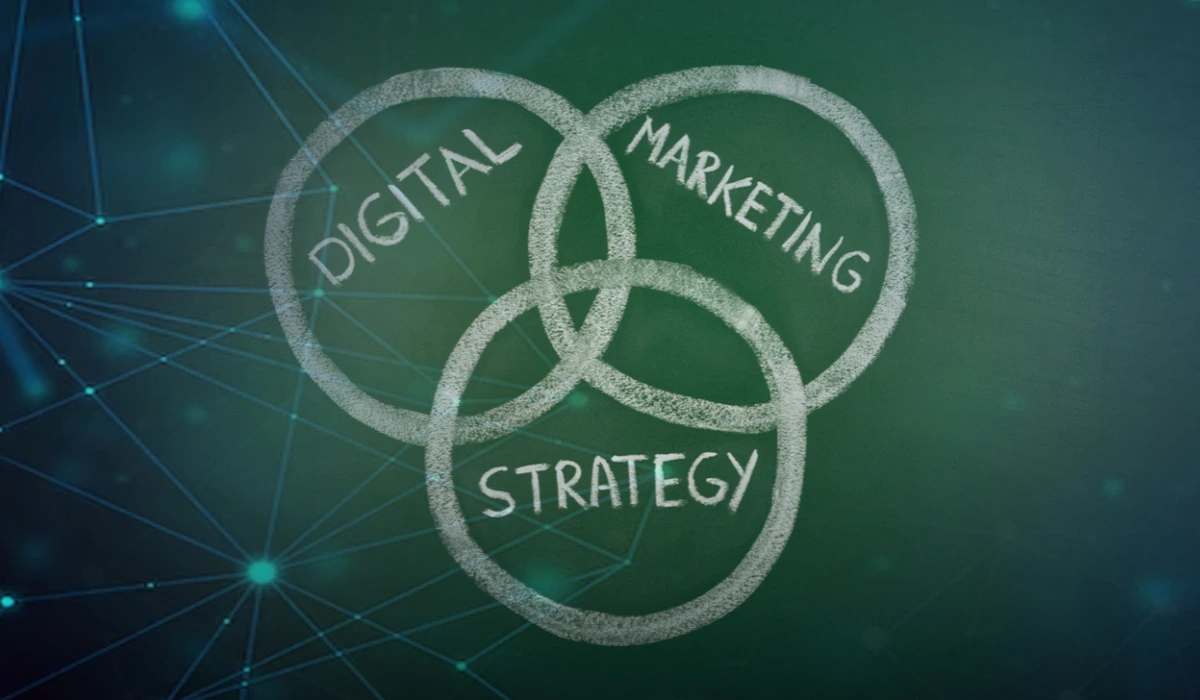- Content marketing and SEO remain the pillars of digital success.
- Social media, influencer marketing, and PPC drive brand awareness and engagement.
- AI, automation, and chatbots enhance customer interactions.
- Email and mobile marketing personalize brand communication.
- Emerging technologies Emerging technologies.
The world is changing—fast. The way we connect, shop, and even think has shifted, and businesses that don’t keep up risk fading into the background. With over 5.35 billion people online today (Statista, 2024), digital marketing isn’t just an option anymore—it’s the heartbeat of every successful brand.
But let’s be real: marketing isn’t just about throwing ads into the void and hoping for the best. It’s about connection. It’s about showing up in the right places, speaking the right language, and building trust with the people who need what you offer. A solid digital marketing strategy isn’t just about visibility—it’s about impact. It’s about telling a story that matters, sparking conversations, and turning casual browsers into lifelong customers.
In this guide, we’ll break down the key elements that drive real results because at the end of the day, digital marketing isn’t about algorithms or trends—it’s about people. And if you understand people, you understand marketing.
Content Marketing: The Foundation of Digital Success
Content marketing has become the backbone of digital strategies, shaping how brands connect with their audience. At its core, it revolves around creating valuable, relevant, and consistent content to attract and retain a defined audience. With 70% of marketers actively investing in content marketing (HubSpot, 2024), it’s clear that this strategy is no longer optional—it’s a necessity. Brands like HubSpot and Adobe have mastered the art of content marketing by publishing insightful blogs, whitepapers, and case studies that position them as industry leaders. Storytelling has emerged as a key differentiator, with companies like Airbnb crafting emotional narratives that resonate with their audience. Moreover, leveraging SEO in content marketing ensures maximum visibility, making it essential to optimize blog posts and long-form content for higher rankings.
Search Engine Optimization (SEO): Maximizing Visibility
SEO remains an indispensable component of digital marketing, ensuring that brands appear at the top of search engine results. With 93% of online experiences beginning with a search engine (BrightEdge, 2024), businesses that neglect SEO risk being overshadowed by competitors. Giants like Amazon and Forbes have built robust SEO strategies by targeting high-intent keywords, optimizing metadata, and continuously updating their content. Companies must focus on technical SEO enhancements, such as page speed optimization and schema markup, to gain an edge in organic rankings. Additionally, link-building remains a crucial factor, as seen in how brands like The New York Times acquire high-authority backlinks to boost their domain authority.
Social Media Marketing: Engaging with Your Audience
Social media platforms have revolutionized brand-audience interactions, with over 4.9 billion users globally (DataReportal, 2024). Businesses leverage platforms like Instagram, LinkedIn, TikTok, and Facebook to create brand awareness and foster engagement. Short-form video content, such as Instagram Reels and TikTok videos, is leading the way in driving user interaction. Nike, for example, harnesses the power of social media by combining influencer partnerships with creative video storytelling. AI-driven social media automation tools, such as Hootsuite and Sprout Social, help brands schedule content and analyze engagement metrics. Moreover, personalized interactions—such as Wendy’s witty Twitter responses—boost engagement rates and create a sense of community among followers.
Affiliate and Influencer Marketing: Leveraging Trust
Affiliate and influencer marketing have emerged as powerful tools in modern digital marketing, with 89% of marketers considering influencer marketing’s ROI comparable to or better than other channels (Influencer Marketing Hub, 2024). Brands like Gymshark and Daniel Wellington have built their entire business models around influencer collaborations, successfully reaching niche audiences through trusted voices. The rise of micro-influencers, who have higher engagement rates than mega-influencers, allows brands to target hyper-specific demographics. Additionally, companies like Amazon and Shopify provide extensive affiliate programs, enabling content creators to promote products while earning commissions, thereby fostering a mutually beneficial ecosystem.
Email Marketing: The Power of Personalization
Despite the rise of new digital channels, email marketing remains one of the most cost-effective strategies, generating $42 for every $1 spent (DMA, 2024). The key to a successful email campaign lies in personalization. Netflix, for example, uses AI-driven recommendations to send hyper-personalized email alerts, keeping users engaged. Businesses should segment their email lists based on user behavior, ensuring that recipients receive relevant content. Automation tools like Mailchimp and HubSpot streamline the process, enabling brands to nurture leads and increase conversions through well-crafted email sequences.
Mobile Marketing: Reaching Users on the Go
With mobile devices accounting for 58% of global web traffic (Statista, 2024), mobile marketing has become a crucial aspect of digital strategies. Brands like Starbucks leverage SMS marketing to send exclusive offers, while Domino’s Pizza allows customers to order via a simple text message. Mobile-optimized websites are now a requirement rather than an option, as Google’s mobile-first indexing prioritizes responsive sites. Additionally, location-based marketing, such as geo-targeted ads used by McDonald's, enables businesses to reach nearby customers with personalized offers.
Audio Marketing: The Rise of Podcasts and Voice Search
The audio marketing landscape is booming, with podcast listenership growing by 30% year-over-year (Edison Research, 2024). Major brands like Spotify and Apple have capitalized on this trend by launching branded podcasts that provide valuable insights while subtly promoting their services. Meanwhile, voice search is reshaping SEO strategies, as seen in how companies optimize content for conversational queries like “best coffee shop near me.” Google Assistant, Siri, and Alexa have made it essential for businesses to structure their content for voice search compatibility, ensuring they appear in featured snippets and voice search results.
Chatbot Marketing: AI-Powered Customer Engagement
Chatbots are revolutionizing customer interactions, with 80% of businesses expected to integrate them by 2025 (Gartner, 2024). Brands like Sephora and H&M use AI-powered chatbots to provide personalized recommendations, enhancing the shopping experience. Chatbots streamline lead generation, handle customer queries, and offer 24/7 support, making them invaluable in today’s fast-paced digital world. Facebook Messenger and WhatsApp chatbots enable businesses to communicate with customers in real time, increasing engagement and conversion rates.
Pay-Per-Click Advertising (PPC): Instant Visibility
PPC advertising ensures immediate visibility, with Google Ads generating an average ROI of 200% (WordStream, 2024). Companies like eBay and Zappos invest heavily in Google Ads to capture high-intent search traffic. Retargeting ads have proven to be particularly effective, as seen in how brands like Adidas use them to re-engage potential customers who abandoned their shopping carts. A/B testing ad creatives and optimizing landing pages further enhance PPC campaign performance, driving better conversion rates.
Online PR and Reputation Management: Building Trust
A strong online reputation directly influences consumer trust, with 88% of customers trusting online reviews as much as personal recommendations (BrightLocal, 2024). Brands like Tesla and Apple actively monitor their online presence, addressing customer concerns swiftly to maintain a positive image. Tools like Google Alerts and Trustpilot help businesses track brand mentions, while encouraging satisfied customers to leave positive reviews bolsters credibility. Addressing negative feedback professionally, as seen in how Airbnb handles customer complaints, can turn potential PR crises into opportunities for brand reinforcement.
Video Marketing: The Future of Digital Content
Video content continues to dominate digital marketing, with 86% of businesses using video as a marketing tool (Wyzowl, 2024). Companies like Red Bull and GoPro leverage high-energy, adrenaline-pumping video campaigns to captivate audiences. Short-form videos on TikTok and Instagram Reels are driving engagement, while live streaming on platforms like YouTube and Facebook fosters real-time interactions. Mobile optimization is key, as most video content is consumed on smartphones, making vertical video formats more effective.
Instant Message Marketing: Real-Time Engagement
Instant messaging platforms like WhatsApp, Facebook Messenger, and Telegram have opened new avenues for real-time marketing. Brands like KLM Airlines use WhatsApp for customer support, providing instant updates on flight statuses. Personalized offers sent via instant messaging result in higher engagement rates, making this channel an essential part of modern digital strategies.
Virtual Reality (VR) Marketing: The Next Big Thing
Virtual reality marketing is set to reshape digital experiences, with the VR market expected to reach $184 billion by 2026 (Statista, 2024). Real estate giants like Zillow offer virtual property tours, while brands like IKEA allow customers to visualize furniture in their homes using VR technology. Events and conferences are embracing VR to create immersive networking and learning experiences, setting the stage for the future of digital marketing.
Conclusion
A successful digital marketing strategy isn’t about just one magic trick—it’s a mix of different tactics working together. From SEO and content marketing to AI-driven chatbots and even virtual reality, businesses need to keep up with evolving trends, analyze what’s working, and tweak their strategies along the way. At the end of the day, it’s all about staying visible, engaging the right people, and making every click count. The brands that embrace these strategies won’t just survive—they’ll lead the way.








